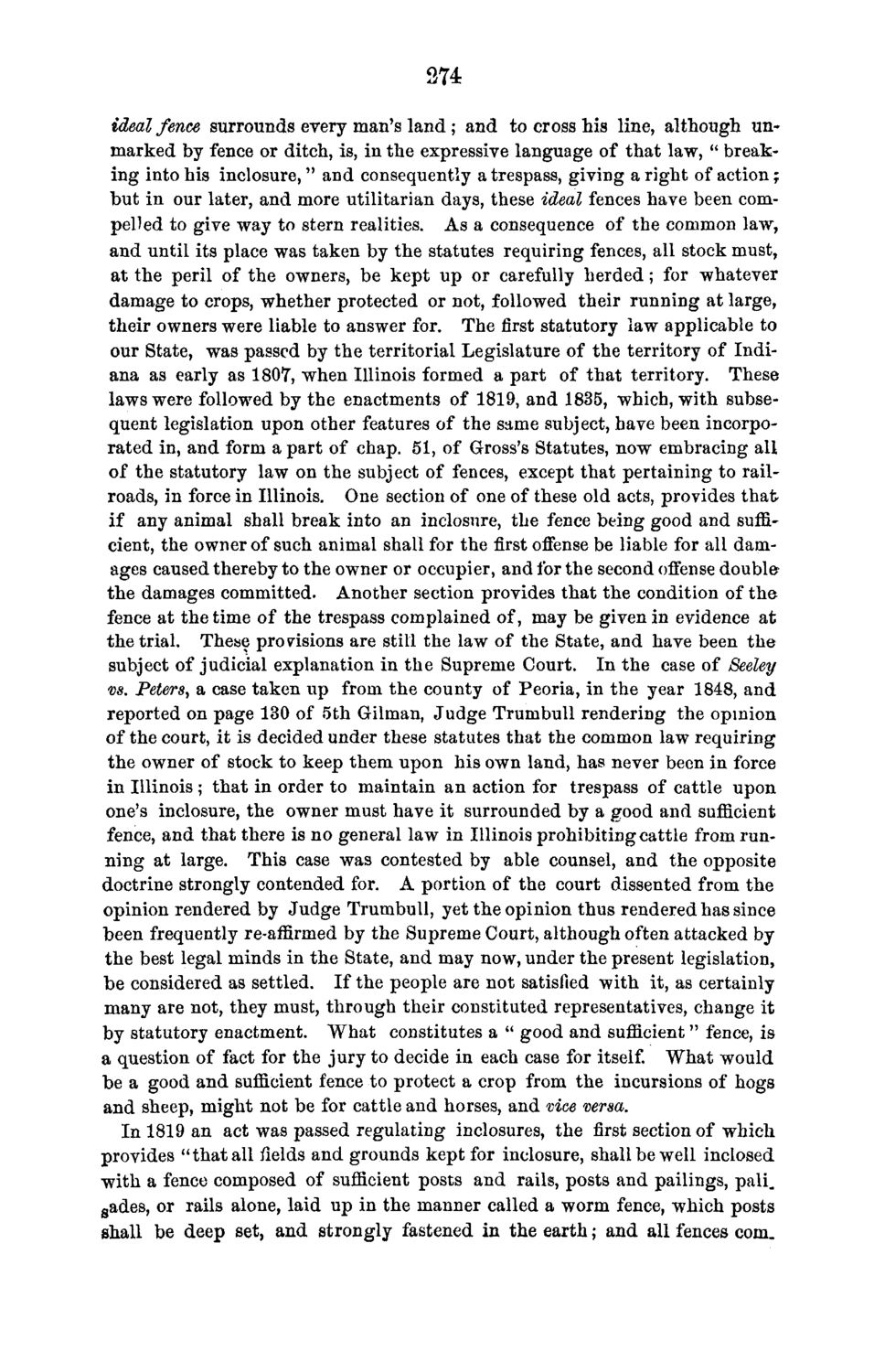| |
| |
Caption: Board of Trustees Minutes - 1870
This is a reduced-resolution page image for fast online browsing.

EXTRACTED TEXT FROM PAGE:
274 ideal fence surrounds every man's land ; and to cross his line, although unmarked by fence or ditch, is, in the expressive language of that law, " breaking into his inclosure," and consequently a trespass, giving a right of action; but in our later, and more utilitarian days, these ideal fences have been compelled to give way to stern realities. As a consequence of the common law, and until its place was taken by the statutes requiring fences, all stock must, at the peril of the owners, be kept up or carefully herded; for whatever damage to crops, whether protected or not, followed their running at large, their owners were liable to answer for. The first statutory law applicable to our State, was passed by the territorial Legislature of the territory of Indiana as early as 1807, when Illinois formed a part of that territory. These laws were followed by the enactments of 1819, and 1835, which, with subsequent legislation upon other features of the same subject, have been incorporated in, and form a part of chap. 51, of Gross's Statutes, now embracing all of the statutory law on the subject of fences, except that pertaining to railroads, in force in Illinois. One section of one of these old acts, provides that if any animal shall break into an inclosure, the fence being good and sufficient, the owner of such animal shall for the first offense be liable for all damages caused thereby to the owner or occupier, and for the second offense double? the damages committed. Another section provides that the condition of the fence at the time of the trespass complained of, may be given in evidence at the trial. These provisions are still the law of the State, and have been the subject of judicial explanation in the Supreme Court. In the case of Seeley vs. Peters, a case taken up from the county of Peoria, in the year 1848, and reported on page 130 of 5th Giiman, Judge Trumbull rendering the opinion of the court, it is decided under these statutes that the common law requiring the owner of stock to keep them upon his own land, has never been in force in Illinois ; that in order to maintain an action for trespass of cattle upon one's inclosure, the owner must have it surrounded by a good and sufficient fence, and that there is no general law in Illinois prohibiting cattle from running at large. This case was contested by able counsel, and the opposite doctrine strongly contended for. A portion of the court dissented from the opinion rendered by Judge Trumbull, yet the opinion thus rendered has since been frequently re-affirmed by the Supreme Court, although often attacked by the best legal minds in the State, and may now, under the present legislation, be considered as settled. If the people are not satisfied with it, as certainly many are not, they must, through their constituted representatives, change it by statutory enactment. What constitutes a " good and sufficient" fence, is a question of fact for the jury to decide in each case for itself. What would be a good and sufficient fence to protect a crop from the incursions of hogs and sheep, might not be for cattle and horses, and vice versa. In 1819 an act was passed regulating inclosures, the first section of which provides "that all fields and grounds kept for inclosure, shall be well inclosed with a fence composed of sufficient posts and rails, posts and pailings, pali. s ades, or rails alone, laid up in the manner called a worm fence, which posts shall be deep set, and strongly fastened in the earth; and all fences com.
| |